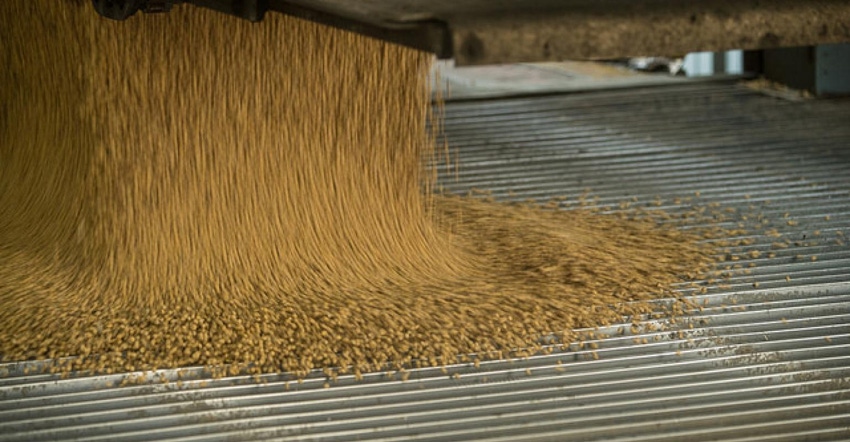
The grains were likely oversold going into yesterdays WASDE report. They had been brushing off increasing ethanol usage and steady exports, becoming laser focused on yield. The market had been conditioned to expect a higher corn and soybean yield, which would boost ending stocks and decrease prices.
With ending stocks as low as they are, the market has become increasingly sensitive to relatively minor adjustments of a couple tenths of a bushel. In the case of soybeans, the trade was looking for an increase of 0.2 bpa, to 51.7 bpa -- and instead was reduced to 51.2 bpa. That is a half a bushel swing that caught the market off guard and sent the market up 35 cents at one point.
USDA still found a way to offset those gains by decreasing exports by 40 million bushels. So, despite a surprise yield reduction, ending stocks in soybeans still increased by 20 million bushels. This was a bit less than what the market was looking for.
Corn yield higher
The exact opposite happened in corn, where they increased yield by 0.5 bpa to 177 bpa. This added 43 million bushels of production. However, USDA offset that by increasing ethanol consumption by 50 million bushels. This reduced overall ending stocks by 7 million bushels.
While this was viewed as a relatively neutral report, the market has so far responded positively by adding 11 cents.
We see increased demand keeping a lid on inventories through the winter season. Technicals identified $5.48 as new support in December corn, which bounced off the 20-day moving average and moves back above the long-term downtrend, signaling a break higher.
With farmers either finished or nearly finished with harvest, those who stored grain will need a compelling reason to open the bins again, and $5 corn is not going to do it. Farmers have seen this show before, when they were not greedy enough last season, selling too early.
This should create basis improvements as buyers will need to become more competitive.
Soy charts tell a different story
The soybean charts are a little bit different story as they have yet to break their long-term downtrend started last May. Step one is for the market to follow through on its key reversal yesterday. If it manages to do that, it will run into heavy resistance at the $12.40 level. It will need to break above this resistance to have any chance of signaling a broader move higher and to break the current trend lower.
There is still time for it to do that, however, as Brazil’s crop will be here before you know it and this will weigh heavily on the markets.
Some areas in Mato Grosso will begin harvest in January with the bulk of the harvest coming in February. They are currently putting the finishing touches on what is one of their best planting seasons ever. This indicates that the 144 MMT Brazil soybean crop projection is easily attainable and if adequate weather continues, could move even higher.
Put strategy
Hedgers and traders are advised to utilize a put strategy to protect against continued market deterioration like what we have been seeing the last eight months. With the November WASDE report now absorbed, we have a much better idea of what yields are and we look to resume post-harvest firmness in the markets.
Nevertheless, we need to protect our profits and manage our downside risk.
Matthew Kruse is President of Commstock Investments and can be reached at 712-227-1110.
Futures trading involves risk. The risk of loss in trading futures and/or options is substantial and each investor and/or trader must consider whether this is a suitable investment. Past performance is not indicative of future results. Trading advice is based on information taken from trades and statistical services and other sources that CommStock Investments believes to be reliable. We do not guarantee that such information is accurate or complete and it should not be relied upon as such. Trading advice reflects our good faith judgment at a specific time and is subject to change without notice. There is no guarantee that the advice we give will result in profitable trades.
The opinions of the author are not necessarily those of Farm Futures or Farm Progress.
About the Author(s)
You May Also Like






